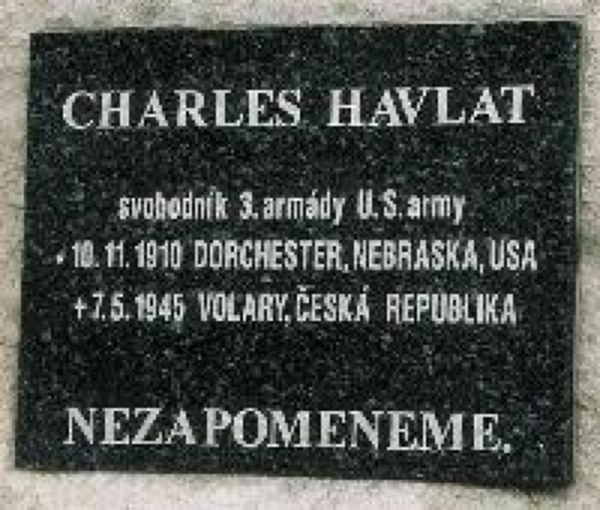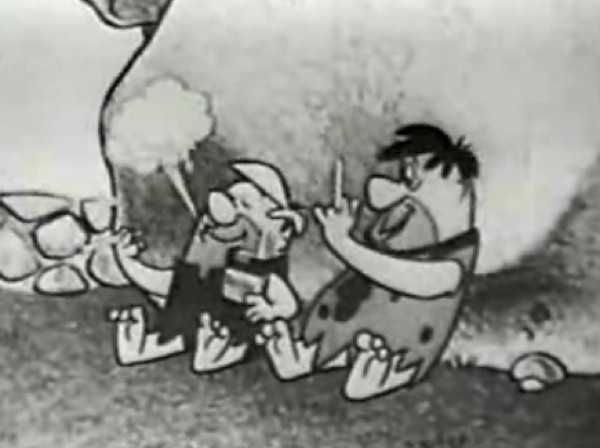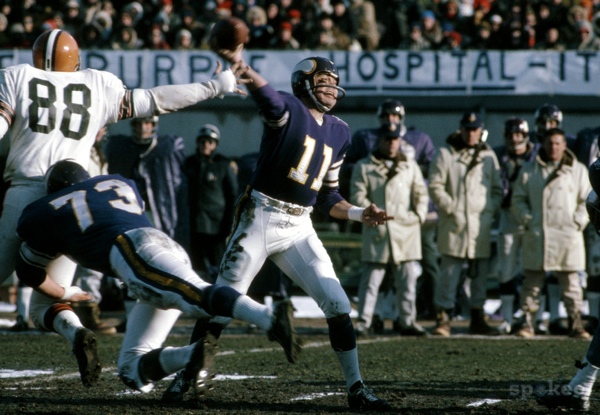 Music
Music  Music
Music  History
History 10 Less Than Jolly Events That Occurred on December 25
 Weird Stuff
Weird Stuff 10 Funny Ways That Researchers Overthink Christmas
 Politics
Politics 10 Political Scandals That Sent Crowds Into the Streets
 Weird Stuff
Weird Stuff Ten Bizarre Facts About The Doge Meme
 Our World
Our World 10 Ways Your Christmas Tree Is More Lit Than You Think
 Movies and TV
Movies and TV The 10 Coolest Stars to Set Sail on The Love Boat
 History
History 10 Things You Didn’t Know About the American National Anthem
 Technology
Technology Top 10 Everyday Tech Buzzwords That Hide a Darker Past
 Humans
Humans 10 Everyday Human Behaviors That Are Actually Survival Instincts
 Music
Music 10 Surprising Origin Stories of Your Favorite Holiday Songs
 History
History 10 Less Than Jolly Events That Occurred on December 25
 Weird Stuff
Weird Stuff 10 Funny Ways That Researchers Overthink Christmas
Who's Behind Listverse?

Jamie Frater
Head Editor
Jamie founded Listverse due to an insatiable desire to share fascinating, obscure, and bizarre facts. He has been a guest speaker on numerous national radio and television stations and is a five time published author.
More About Us Politics
Politics 10 Political Scandals That Sent Crowds Into the Streets
 Weird Stuff
Weird Stuff Ten Bizarre Facts About The Doge Meme
 Our World
Our World 10 Ways Your Christmas Tree Is More Lit Than You Think
 Movies and TV
Movies and TV The 10 Coolest Stars to Set Sail on The Love Boat
 History
History 10 Things You Didn’t Know About the American National Anthem
 Technology
Technology Top 10 Everyday Tech Buzzwords That Hide a Darker Past
 Humans
Humans 10 Everyday Human Behaviors That Are Actually Survival Instincts
10 Little-Known Historical Lasts
Everybody loves a list of firsts, because people are curious, as evidenced by the fact that you’re reading a website full of interesting lists. When people are learning about things, the first thing they want to know about it is whatever was the very first example.
Well, we don’t mean to be contrary, because those lists can certainly be informative and entertaining, but everything has a first- everything. Not everything has a definitive LAST instance of it ever happening- something that used to be commonplace, but now can absolutely never, ever happen again.
We’ve seen (and published) our share of awesome lists of firsts, but we can’t recall ever seeing a list of lasts. Since we are Listverse, allow us to remedy the situation.

The Western Union Telegram was the texting of the olden days. Prior to their completion of the first transcontinental telegraph line in 1861, your best bet for getting a message across a long distance was the Pony Express—which had only been operating for two years, had an average delivery time of ten days, and was put out of business pretty much overnight by Western Union. Telegrams were received almost immediately from as far away as the opposite end of the country by local Western Union offices, who employed couriers to hand deliver the messages locally.
Business exploded as more telegraph lines were laid, and by the telegram’s peak in 1929, 200 million of them were being delivered yearly. They became an enormous part of American culture, known for their curt wording and use of “STOP” in place of punctuation (as periods cost extra, but four letter words were free, which was probably convenient if one wanted to send a particularly angry and colorful telegram).
Deliveries dropped steadily over the years as long-distance phone service, email, and finally text and instant messaging slowly eroded the telegram’s usefulness. Volume had dropped to around 20,000 by the final year, mostly for official or certified messages, and the last telegram was sent on Friday, January 27, 2006. What did it say? Western Union doesn’t know or won’t tell, but it almost certainly ended with, “STOP“.

Before the advent of home video in the mid to late ’70s, if you wanted to see a movie, you’d better see it in the theater. After that, it was lost to you unless you were lucky enough to catch it in a re-release, or perhaps an edited-down version on network TV.
Along with pay-cable networks, the VHS tape changed all of that. After utterly dominating the video format war, VHS became ubiquitous—practically every American home had a VCR, and even smaller towns had multiple video stores. Chains like Blockbuster and West Coast Video raked in billions, while giving movie buffs unprecedented access to independent, foreign and little-seen films, right there on the shelf alongside huge Hollywood hits.
We all know that the faithful VHS tape has long been supplanted by DVD, Blu-Ray and digital streaming, but unlike the music industry (where indie bands still release music on cassette tape because, you know, it’s cheap), movies on VHS had a definite endpoint—2006 again. The very last movie to be released in the format was David Cronenberg’s A History Of Violence, an excellent film that is probably streaming on Netflix right now—or you can buy a VHS copy off of Ebay, and fire up that ancient VCR in your attic once more, for old times’ sake.

Early in the morning on May 7th, 1945, the German army surrendered unconditionally to the Allies at Reims in the Northwest of France. Unfortunately, there was no email then, so it took a little while for word to spread to all units.
Shortly after eight that morning in the Northern part of what is now Czechoslovakia, the 803rd Tank Destroyer Battalion, who hadn’t got the message, was ambushed by a German Panzer unit, who also hadn’t gotten the message and probably was a little irked about the whole “out to destroy tanks” thing. A firefight ensued, and Private First Class Charles Havlat, a 34-year old Nebraskan, was shot through his helmet and killed.
By most accounts, this makes him the last Allied soldier killed in the European theater of operations, as a courier rushed up with the cease-fire message literally ten minutes later. It was surely a bittersweet celebration for the 803rd, and the commander of the Panzer unit later apologized.

On June 30th, 1952, The Guiding Light, a daytime drama serial, debuted on CBS television. CBS wasn’t taking many big chances with the fledgling medium—the show was already a proven success, having run as a radio serial for 15 years, but nobody had any way of knowing just how successful it would be.
Over 57 years and over 18,000 episodes, Guiding Light became the longest running drama—and second-longest running broadcast of any kind in history. Dozens of characters came and went, died and were revived (this happened 15 times during the show’s run), married, divorced and married again.
Guiding Light is so old that CBS consulted Proctor and Gamble—the soap company—before canceling the show; P&G had sponsored it since its inception, in the days when all the “soaps” were actually sponsored by soap companies. The final episode aired on September 18, 2009.

A joint venture between the British and French governments, the Concorde is the greatest passenger jet to ever exist. Only sixteen were built; capable of supersonic speed (over 1,300 miles per hour), the service specialized in getting passengers across the Atlantic Ocean in a hell of a hurry. It could make the trip between London and New York in just over three hours—with the time difference, one would arrive in New York earlier than they left London—and was a favorite among politicians and celebrities; it’s the reason Phil Collins was able to play at both Live Aid concerts, in London and Philadelphia, on the same day.
Service began in 1976. Unfortunately, the venture was never a commercial success—the fleet was expensive to maintain, and with fares around $9,000, the transatlantic jaunt was not exactly accessible to all. The only Concorde crash in history in June of 2000, which killed all 113 passengers, didn’t help matters; neither did the overall reduced air travel after September of 2001, which made the fleet an even heavier—ultimately unbearable—financial burden.
On the 24th of October, 2003, Concorde made its final trip across the Atlantic, from New York to London, carrying around a hundred celebrities. The fleet was thereafter retired, and no supersonic passenger planes have flown since.

The picture above is not a Photoshop—cigarettes used to be advertised on TV and in magazines alongside regular, non-life-threatening products, and sometimes in ridiculous fashion (as you can see). Despite their health hazards being known for decades prior, nobody stepped in to make sure there was some degree of responsibility in advertising them until 1967, when a provision was enacted requiring TV stations to air one anti-smoking PSA for every three cigarette ads.
Since that was laughably ineffective, bills started floating around Congress to ban all televised and print cigarette advertisements shortly thereafter at a time when tobacco companies were the single largest advertiser on TV. The tobacco lobby was able to hold the legislation at bay for awhile, but soon realized that allowing it to pass would free up tons of money for advertising in other media, and allow them to stop shooting themselves in the foot producing anti-smoking PSAs.
Big Tobacco soon acquiesced, and President Nixon signed the bill on April Fools’ Day, 1970. It took effect on January 2nd of the following year; the final televised cigarette ad—for Virginia Slims—aired during The Tonight Show With Johnny Carson at 11:50 PM on January 1st, 1971.

The Nintendo Entertainment System or NES (“Famicom” in Japan) single-handedly resurrected the home video game industry from the crash of 1983, and became a runaway smash hit on the strength of an awesome and diverse library of games.
Its successor, the 16-bit Super Nintendo, was released in North America in August of 1991, and was also an immediate hit; however, neither consumers nor Nintendo gave up on the old 8-bit classic for awhile. Titles for the NES continued to be released throughout 1992 and ’93, but began slowing down in earnest in ’94.
On December 10th, 1994, Nintendo released the final official title for the NES, a puzzler called Wario’s Woods. It was a middling game that received so-so reviews, not exactly a spectacular end to one of the most influential and greatest video game systems of all time.

In 1959, Lamar Hunt, son of oil millionaire H.L. Hunt, decided to get into the professional football business. He really wanted to bring an NFL franchise to his home town of Dallas, but the league wasn’t interested in expanding at the time, so Hunt said screw it and started his own league. The AFL (American Football League) fielded teams for ten years before being absorbed into the NFL in 1970; the two newly christened “conferences” would have their respective champions play in a final championship game at the end of the year, called the “Super Bowl”, which you may have heard of.
Before the Super Bowl era, the NFL Championship had a rich tradition dating back to 1920. Many teams that no longer exist captured NFL crowns, and some teams that have never won a Super Bowl (like the Detroit Lions and Cleveland Browns) won multiple championships in the pre-Super Bowl era.
The final team to win a pre-Super Bowl NFL crown—on January 4th, 1970—was the Minnesota Vikings, which is interesting for a couple of reasons. For one, this final NFL crown was the Vikings’ first championship. For another (as of this writing, anyway) it was their last—the Vikings have never won a Super Bowl. They’ve been to the big game no less than four times, and lost every single time.

One of two twin Mars exploration rovers (the other called “Opportunity”), the Spirit Rover was active for six years, between 2004 and 2010, cruising around on Mars. It was able to remain active for about 20 times as long as engineers had hoped for, and during its life transmitted dozens of images and a ton of valuable information about the Martian surface.
On May 1st, 2009, the Rover got stuck in some soft soil. It wasn’t the first time it had happened, but it was the last; project engineers tried for months, but were unable to get it free, and there it died. Opportunity is still cruising around on the other side of the red planet. The final image from Spirit (seen above)—a panoramic view of the Columbia Hills, named in honor of the space shuttle—arrived on March 22, 2010.

Americans of a certain age can probably recite these words, or something very close, by heart: “This is a test of the Emergency Broadcast System. The broadcasters of your area in voluntary cooperation with the FCC and federal, state and local authorities have developed this system to keep you informed in the event of an emergency. This is only a test.”
The Emergency Broadcast System came online in 1963, at one of the prolonged peaks of the Cold War, replacing the old CONELRAD system that was more geared toward attack by enemy bombers (as opposed to nuclear missiles). These short test broadcasts, always preceded by the “only a test” disclaimer, consisted of a test tone of 30 to 60 seconds that, if you have ever heard, you can hear in your head right now. Or alternatively on YouTube.
The final test of the EBS came sometime on December 31st, 1996, as it was replaced by the more streamlined and updated Emergency Alert System, which does not require video broadcast tests, on January 1st of ’97. Some stations still run video tests, usually in the middle of the night; a welcome change for those of us who remember our favorite shows being occasionally interrupted by that damn tone, followed by: “If this had been an actual emergency, you would have been instructed where to tune in your area for news and official information. This concludes this test of the Emergency Broadcast System.”
Floorwalker’s blog and Twitter are groovy, man, groovy.








